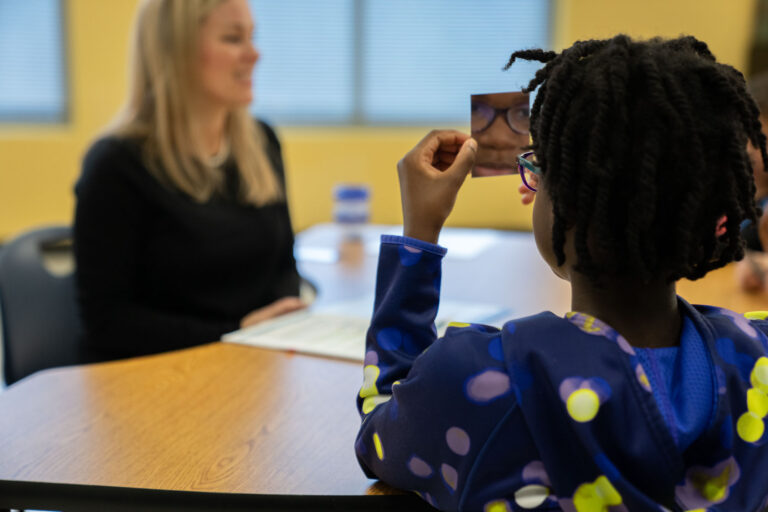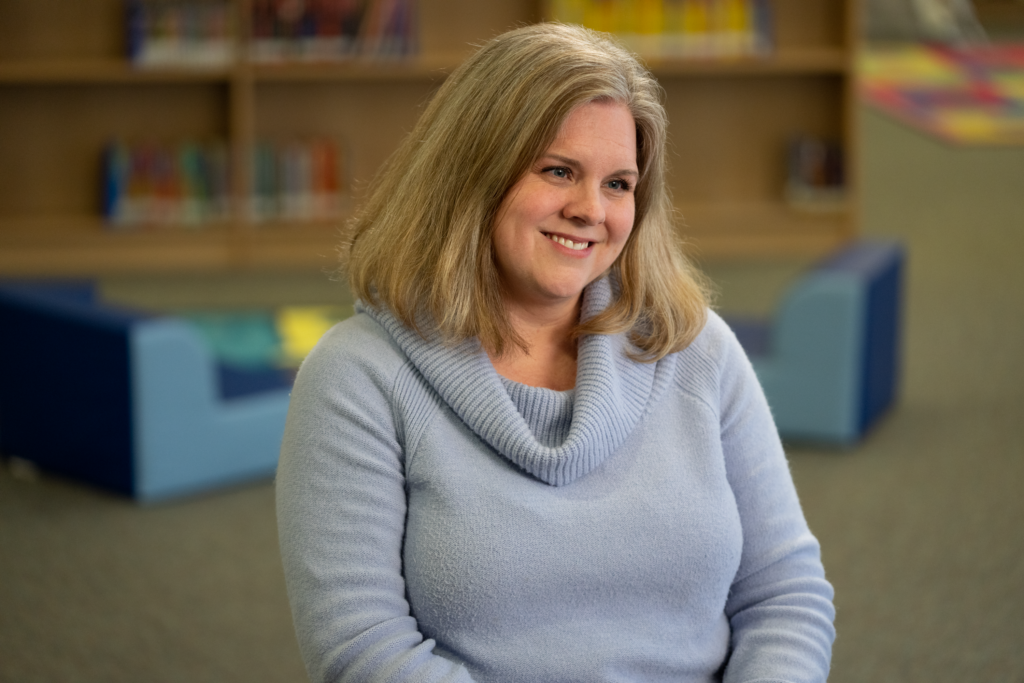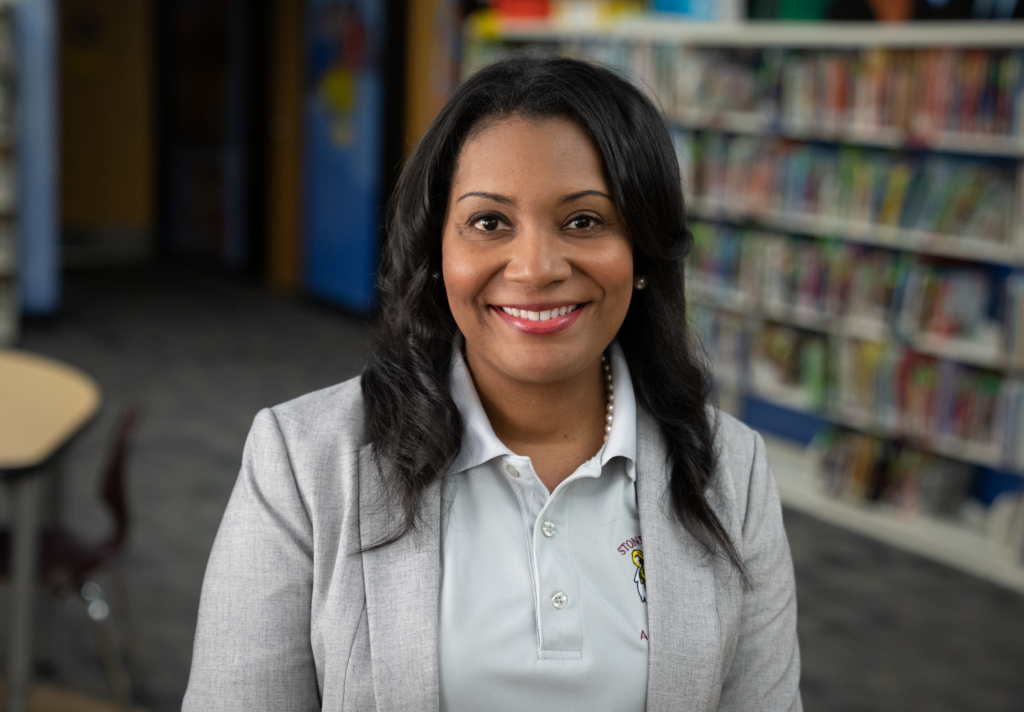Spotlight Georgia: Watch Fulton County
Every child deserves the right to read. Fulton County Schools, just outside the Atlanta city limits, has 80% minority enrollment and serves approximately 90,000 students, with 31% of them receiving free or reduced lunch.

Science of reading is the roadmap
District Superintendent, Dr. Mike Looney, is committed to reading improvement and with good reason. “Less than half of the students in the state of Georgia read on grade level,” he said in an interview. “That’s one heck of an indictment on what we’ve historically done.”
Dr. Looney, recently named to Atlanta Magazine’s list of 500 Most Powerful Leaders, and his school team turned to 95 Percent Group to ensure that all students in Fulton County could receive the science-based literacy instruction they deserved. Read on to find out how far they have come after just months of using resources from the One95™ Literacy Ecosystem.
Student snapshot
- 4th biggest district in Georgia (Atlanta metro area)
- 14,000 employees and 90,000 students
- 59 elementary schools
- 74% minority enrollment
- 31% free and reduced lunch
One95 literacy ecosystem solutions

We weren’t reaching all of our students.
Jennifer Burton
Challenge: One district, many programs
For years decisions about reading curriculum were left to the discretion of individual schools in Fulton County. Jennifer Burton, Fulton County’s director of literacy, weighed in on this idea. “This resulted in a hodgepodge of balanced literacy-based programs, not backed by the science of reading, that clearly weren’t reaching all students,” she said.
When you have many school leaders all making different decisions, it becomes difficult to have clear communication and one guiding direction. The district needed one program based in the science of reading: a literacy program to implement across ALL of their elementary schools in order to all move in the same direction towards reading proficiency.
Solution: One literacy ecosystem to reach all students
At the beginning of the school year, Fulton County Schools decided to put the 95 Phonics Core Program® in every K-3 classroom in the district. Burton saw immediate value from the plan. “With 95 Phonics Core Program, you get systematic, explicit instruction, and all of our students are using it. So it doesn’t matter which school you’re in, we’re guaranteeing that all students are going to get a high-quality phonics program.”
A prescriptive, systematic, rigorous, and explicit phonics program. That’s our game changer. That’s 95 Percent Group.
Jennifer Burton
The leadership and instructional teams knew they wanted their explicit instruction to continue past third grade. In order to foster student agency and knowledge building, good readers needed to do more than just decode words correctly. The district turned to several other resources in the One95 literacy ecosystem, which integrates professional learning and evidence-based literacy products into one cohesive system that supports consistent instruction across tiers.
Students in grades 4 and 5 are now excelling above expectations in their reading comprehension due to programs like 95 Vocabulary Surge–Unleashing the Power of Word Parts™. Stonewall Tell Principal, Nikki Porter, reports that her daughter, a 5th grader at Stonewall Tell, comes home saying, “Mom! Did you hear that Tier 2 word?” It’s changing the way students read and speak.
“One of the reasons we found 95 Percent Group,” Burton said, “was because in our district, we are all going through Language Essentials for Teachers of Reading and Spelling (LETRS®) training—from the superintendent to district leaders, building leaders, and teachers. Everyone is going through this science of reading training. And in that program, 95 Percent Group resources were referenced. On the bottom of the lesson plans, it says, ‘taken from 95 Percent Group.’’’
She knew immediately. “We need this.”
95 Percent Group offers programs that are adaptable to school curriculum and aligned with the science of reading. The phonological awareness and phonics assessments, 95 Phonological Awareness Screener for Intervention™ (95 PASI™) and 95 Phonics Screener for Intervention™ (95 PSI™), give teachers data in real time—teachers can use scores to inform their instruction, and adjust where necessary to meet every student where they are. Dr. Looney resonates deeply with meeting students where they are: “We take the students where they are when they walk in the door, and we do as much as we possibly can.”
Results: Transformational growth at all grade levels
In five short months, teachers, students, and parents have seen an incredible change in the rate of reading and learning. Students that came into the school year barely reading are now fully decoding and, even better, really enjoying books. The data speaks for itself.
- Students in Dru Wilson’s 2nd grade class at Asa Hilliard Elementary grew as much as 46 percent from their first assessment at the beginning of the year to their third assessment mid-year. This second-grade class began at 63 percent proficiency and now, with only five months of instruction from 95 Phonics Core Program, 92 percent of the class is scoring as proficient on their assessments.
- Mr. Townsend, a third-grade teacher at Vickery Mill Elementary, reported that growth has been enormous already, and clear in his phonics assessments: “…in the beginning of the year, only 53 percent of my students were able to master this program, and now I’m at 94 percent of students understanding it.” He also adds, “Results are very noticeable in student writing, spelling, and reading comprehension. There is improvement in every area that has writing and reading—it’s just clicking for them.”
- “We had a 30-point gain in first grade in the phonics domain!” Amy Long, literacy coach at Stonewall Tell, said excitedly. “We’re growing our green, we’re reducing our red; it is really transforming both the teachers’ and the students’ learning here at Stonewall Tell, and in Fulton County.”

What we’re seeing now is a classroom come alive.
Nikki Porter
Diversity is their schools’ strength
Dr. Mike Looney is clear that he believes the diversity of his unique school district is what sets them apart. He’s equally determined to ensure all kids are getting the education they need and deserve. “All students matter and all students come first,” Dr. Looney said. “And we have become very, very adept at making sure that we can meet the unique challenges of individual students.”
“We have to make sure that we’re giving all students what they need…students cannot be successful in life, or in school unless they can read.” He explained how they set about making sure this could happen. “In order to do this, we retrenched our training program, and our resource programs, to make sure that we’re focused on best practices, things that have been proven to work for students from all backgrounds.”
By partnering with 95 Percent Group, they have sent a message that they believe that all students can learn to read.
Nicola Johnson, 5th grade teacher at Stonewall Tell Elementary, emphasizes the urgent need for rigorous expectations and high-quality curriculum. Implementing explicit vocabulary instruction through 95 Vocabulary Surge has made a noticeable difference in the upper elementary classrooms at Stonewall Tell.
“I come into the classroom and make sure that my scholars can exceed their own expectations—every single day,” said Johnson. “Especially as brown and black boys and girls, their expectation is that ‘we’re not learning, we’re not going anywhere.’ And if there is a teacher that has explicit modeling and an explicit curriculum that allows for that learning and expectation to be exceeded…they can do anything.”
Common literacy language is key
When schools commit to products in the One95 literacy ecosystem, students experience the same routines and language in their whole class learning and in small group intervention. It’s a seamless transition from one to the other.
“One of the really cool things,” says Tiara Atkinson, Fulton County’s early intervention specialist, “is that students are able to know and understand the language in both the classroom setting and in their intervention—because it’s the same. 95 Percent Group has made it easier for teachers, because we are all also speaking the same language. We have the tools now.”
Additionally, teachers and literacy coaches across the district are able to be on the same page when it comes to talking about student learning. Sedeka Gillard, a literacy coach at Stonewall Tell, said, “It’s been a really beautiful experience for all the coaches to be able to come together and speak a common language, you know, somebody from the north [of the district] can come and we can come from the south, and we can all know that we’re speaking that same language. We’re giving those same explicit lessons and our students are receiving the same quality education.”
A partnership for professional learning
With 95 Percent Group’s literacy ecosystem, teachers feel they can really see the applicability of their science of reading training through the tools and products.
“It’s super easy to pick up the 95 Phonics Core Program and see all the things the training is teaching us and how it can become visible in the classroom,” said Laura Robinson, literacy coach at Vickery Mill Elementary School.
Even though it has only been a few months since implementation, Dr. Looney feels the tides of change already. “I’m cautiously optimistic that as more people see our success story, the transformation that’s happening here in Fulton County schools, they’ll be eager to jump on board. We have a roadmap. We can do it.”
Jennifer Burton is excited and hopeful about all that 95 Percent Group has given them so far, and everything she knows is to come. “My eye is on this year’s kindergartners, and where they are going to be at the end of third grade,” she said. “So…keep your eye on Fulton County.”
Three best practices
Here are three best practices your school can use from Fulton County’s roadmap to reading success:
1. Offer all stakeholders a common language based in the science of reading—from leaders and coaches to teachers and students.
In order to work together more seamlessly, educators need to be on the same page. Training all stakeholders means it’s easier to identify and collaborate in order to help students that need critical support, because everyone is speaking the same language.
2. Anchor literacy learning in structure and clear expectations.
Stonewall Tell Literacy Coach Amy Long shares the breakdown of their literacy block: “We have our routine of our reading block and the way that that goes every day is we start off with our phonological awareness. After that, we move right into our phonics block—it’s beautifully prepared by the 95 Core Phonics Program. We’ve got the textbook, we’ve got the presentation file, and they align so nicely. It’s zero prep for the teachers, super easy to use, and it just makes the expectations super clear for the teachers. “
3. Build a safe, trustworthy place for everyone to learn and grow in their practice.
This means teachers, too! Amy Long, Literacy Coach, talks about a strategy they used at Stonewall Tell. They would take video of teachers teaching in order to reflect in their Professional Learning Communities (PLCs) on a peer who has experienced success with 95 PCP or 95 Vocabulary Surge. Together, they would pick out those indicators that they felt were effective, and then teachers would all try to implement that into their practice. She concluded with, “That’s how we’ve been growing around here, by looking at other examples of great work and then collaborating across the district.”
Related content
Learn more
Are you interested in learning about how you can bring an effective and efficient structured literacy approach, grounded in the science of reading, to your school or district? Contact us today.



